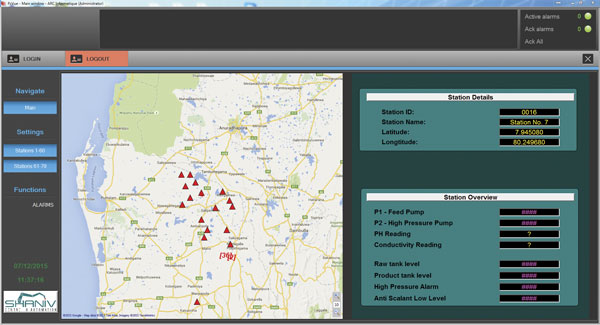System features help operators maximize water treatment benefits.
11/21/2015
Water quality is a critical issue in Sri Lanka, where industrial pollution and contamination from dumping waste are top contenders in a long list of factors impacting the area. Restaurants reportedly were using water from illegal boreholes rather than the town's public supply. The effects of using poor water have been reported in the form of skin diseases, hepatitis and other grave health issues. In light of health risks, there has been a push to quickly address the water supply. One system already improving the water quality situation is a supervisory control and data acquisition (SCADA) system managing hundreds of mobile reverse osmosis (RO) stations.
RO Stations Restore Water Quality
RO is used to remove the majority of contaminants from water by pushing it under pressure through a semi-permeable membrane. Typically groundwater contains a wide array of dissolved minerals. The RO process removes naturally dissolved minerals (such as salt) and dissolved industrial contaminants, creating demineralized water that is safe to consume. In Sri Lanka, RO stations have been placed at wells to supply clean drinking water for residents. The testing of the RO process' effectiveness on water quality is typically done via electrical conductivity. Conductivity is determined by the quantity of ionized substances such as acids, bases and salts that are dissolved in water. Demineralized water is a poor electrical conductor. The SCADA system for this water-monitoring project is well under way. The system is monitoring the state of the RO stations to assess if they are working properly. It checks water quality and reports on such indicators as pH and conductivity values while monitoring the status of the stations' pumps. Each RO station has about 10 tags monitored for this purpose. Approximately 80 RO stations have been installed at wellsites. The RO stations use programmable logic controllers (PLCs), which communicate with cellular modems connected to the SCADA system via a server. Figure 1. The supervisory control and data acquisition (SCADA) system alerts operators to adverse conditions in mobile reverse osmosis stations. (Courtesy of the authors)
Figure 1. The supervisory control and data acquisition (SCADA) system alerts operators to adverse conditions in mobile reverse osmosis stations. (Courtesy of the authors)
